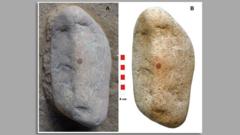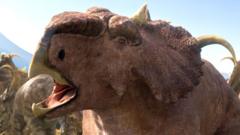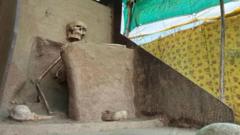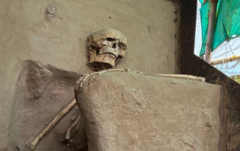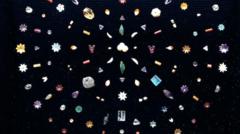**Archaeologists have unveiled a remarkable private bathhouse in Pompeii, showcasing the opulence of Roman life before the catastrophic eruption of Mount Vesuvius. This unprecedented discovery, along with the skeletons of two individuals trapped by the eruption, offers insights into the lives and struggles of Pompeii's inhabitants.**
**"Unveiling the Grandeur: Pompeii's Luxurious Bathhouse Discovery"**
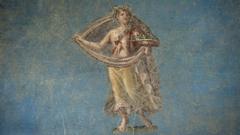
**"Unveiling the Grandeur: Pompeii's Luxurious Bathhouse Discovery"**
**Recent archaeological findings reveal a lavish bathhouse in Pompeii, deepening our understanding of Roman luxury and tragedy.**
After centuries buried beneath volcanic debris, a stunning private bathhouse has been uncovered in Pompeii, Italy—a find described as "once-in-a-century" by experts. This luxurious facility, potentially the largest of its kind discovered in the ancient city, features hot, warm, and cold rooms, exquisite frescoes, and a generous plunge pool.
"This bathhouse epitomizes the 'Pompeii effect'; it feels as if its occupants vanished mere moments ago," remarked Dr. Gabriel Zuchtriegel, director of the Archaeological Park of Pompeii, highlighting the bathhouse's rich detail and connection to daily Roman life.
The bathhouse's changing room boasts vibrant red walls adorned with intricate mosaics, while two skeletons found within reveal a heart-wrenching tale of desperation. One skeleton, a woman clutching gold jewelry, and a younger man were discovered entombed in a small room, evidence of their futile attempt to escape the catastrophic pyroclastic flow that engulfed the city in AD 79.
Dr. Ludovica Alesse, a conservator at Pompeii, noted, "This dramatic discovery tells us much about the chaos faced by the city's last inhabitants." Though a third of Pompeii remains hidden beneath ash, this excavation—one of the most thorough in decades—opens a window into the lives of affluent Romans and their daily rituals.
Alongside the bathhouse, an entire city block has emerged, revealing a laundry, bakery, and the potential residence of a local elite, possibly Aulus Rustius Verus, a noted politician in Pompeii. Dr. Zuchtriegel confirmed that the lavish bath complex was exclusive to the social elite, underscoring the stark class divisions of Roman society.
Visitors to the bathhouse would experience an array of luxurious amenities, including a warm room for skin treatments and a striking frigidarium with columns and vibrant artwork. The facility's sheer scale indicates that 20-30 people could enjoy the cool plunge pool simultaneously, a stark contrast to the simplicity of the cramped furnace room where enslaved individuals toiled to maintain the bath’s operations.
Tragically, the finds include remnants of the lives left behind—a striking juxtaposition between opulence and survival. Nearby, stacks of oyster shells suggest ongoing renovations in the residence, marking a poignant pause before the imminent disaster.
Amid the ongoing excavation, Dr. Anna Onesti expressed excitement about the consistent surprises presented by the site, noting, "Every day brings new revelations, keeping the ancient city's history alive for future visitors."
This breathtaking discovery not only enhances our understanding of Pompeii's social dynamics but also reinvigorates appreciation for the artistry and craftsmanship of the past. Viewers can witness more about this excavation in the upcoming documentary *Pompeii: The New Dig – House of Treasures*, premiering January 20 on BBC Two.


